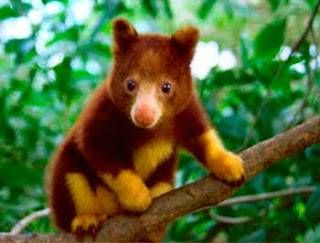There are lots of way to help save these endangered species and we should do something to help them. If we do so then for sure in the future we are able to let our grandchildren see them too. Tree kangaroo is a beautiful creature and we should help keep them save. Here are some wyas to help them :
· Support WWF's efforts to preserve tree kangaroo habitat - only buy wood or wood products that come from properly managed and sustainable forests which have been certified by the Forest Stewardship Council (FSC)










